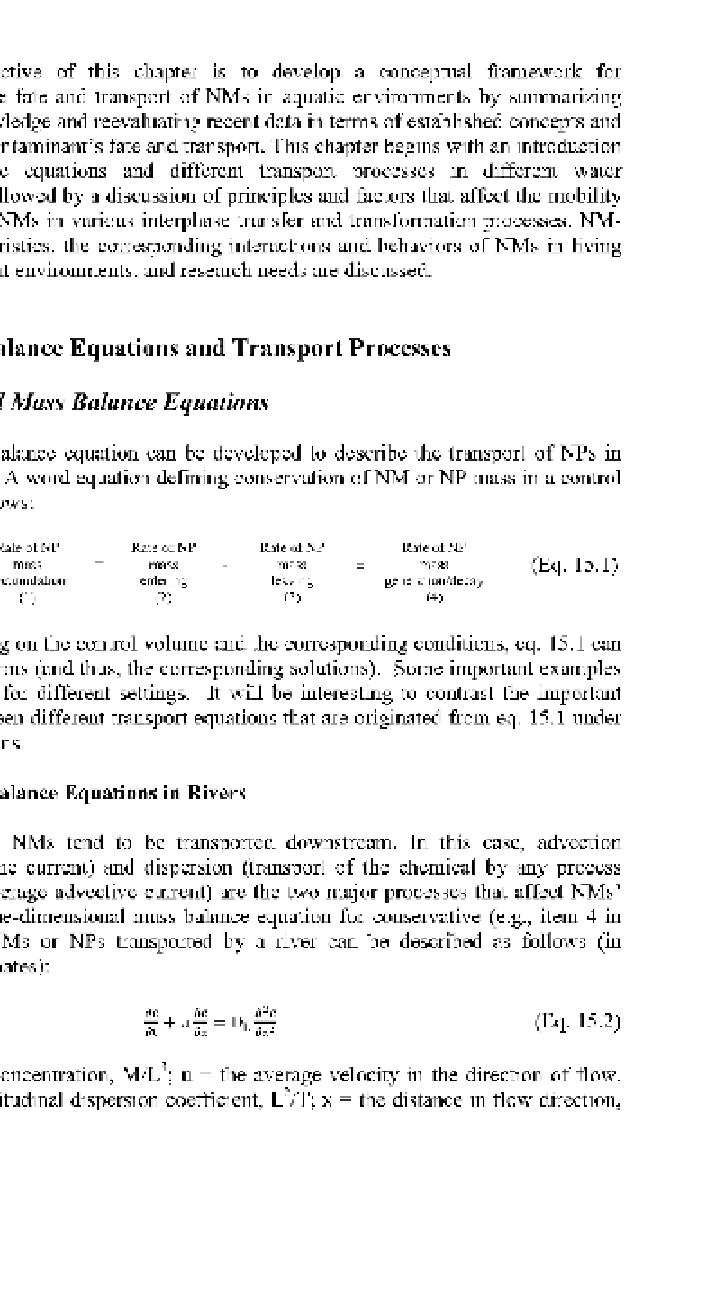Environmental Engineering Reference
In-Depth Information
The objective of this chapter is to develop a conceptual framework for
understanding the fate and transport of NMs in aquatic environments by summarizing
the existing knowledge and reevaluating recent data in terms of established concepts and
models for the contaminant's fate and transport. This chapter begins with an introduction
of mass balance equations and different transport processes in different water
environments, followed by a discussion of principles and factors that affect the mobility
and behavior of NMs in various interphase transfer and transformation processes. NM-
induced characteristics, the corresponding interactions and behaviors of NMs in living
beings or different environments, and research needs are discussed.
15.2 Mass Balance Equations and Transport Processes
15.2.1 General Mass Balance Equations
A mass balance equation can be developed to describe the transport of NPs in
aquatic systems. A word equation defining conservation of NM or NP mass in a control
volume is as follows:
Rate of NP
Rate of NP
Rate of NP
Rate of NP
mass
=
mass
-
mass
±
mass
(Eq
.
15.1)
accumulation
entering
leaving
generation/decay
(1)
(2)
(3)
(4)
Depending on the control volume and the corresponding conditions, eq. 15.1 can
have different forms (and thus, the corresponding solutions). Some important examples
are given below for different settings. It will be interesting to contrast the important
differences between different transport equations that are originated from eq. 15.1 under
different conditions.
15.2.1.1
Mass
Balance Equations in Rivers
In rivers, NMs tend to be transported downstream. In this case, advection
(transport with the current) and dispersion (transport of the chemical by any process
other than the average advective current) are the two major processes that affect NMs'
transport. The one-dimensional mass balance equation for conservative (e.g., item 4 in
eq. 15.1 = 0) NMs or NPs transported by a river can be described as follows (in
Cartesian coordinates):
^
d
2
c
/-i-i
-i r-
r\\
dc
dc
L
dx
2
\ ~1
J
— + u— = D
L
—
(Eq. 15.2)
dx
3t
where c = NM concentration, M/L
3
; u = the average velocity in the direction of flow,
L/T; DL = a longitudinal dispersion coefficient, L /T; x = the distance in flow direction,

Search WWH ::

Custom Search